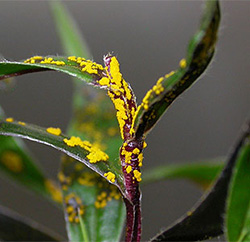
The arrival of myrtle rust, threatening some of New Zealand’s most precious native trees, shows the kind of impact climate change could have on the country, says Forest and Bird. Source: Timberbiz
Myrtle rust, or Puccinia psidii, is a fungus with spores that are spread by the wind, and is likely to affect pohutukawa, rata and manuka, as well feijoas and guavas.
Originating in South America, it has already spread to other countries, including Australia, where it has wiped out some native tree species.
It has now been found on pohutukawa on Raoul Island, in the Kermadecs north of New Zealand, and scientists, conservationists and the honey and horticulture industries fear it will make it to the mainland.
“MPI and the Department of Conservation must put in place rigorous bio-security controls between the Kermadecs and New Zealand to stop this fungus ever reaching our mainland forests,” says Forest & Bird climate advocate Adelia Hallett.
Ms Hallett says that while its not known whether this particular disease is linked to a warming climate, we should expect to see new and potentially devastating pests and diseases arrive in the country and take hold as the climate changes.
“The north of New Zealand is likely to get warmer and wetter, and that means that diseases like myrtle rust could thrive here,” she said.
“Nature is already in crisis in New Zealand, with some 1000 species heading for extinction. They now also have to cope with the impacts of climate change, including a host of new pests and diseases.”
Forest & Bird says the Government needs to join the battle to protect our native species against climate change by:
- Requiring real reductions in greenhouse gas emissions in order to limit the extent of climate change.
- Making sure our natural ecosystems, including forests, are as healthy as possible so they have the best chance possible of surviving the arrival of new pests and diseases.
- Funding independent research into the effects of climate change on New Zealand’s native wildlife.





